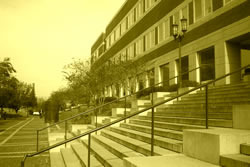|
|||||||
|
|
|
Home |

|
November 15th: Extra-textual Elements(Not to be confused with extraterrestrial elements; that show is a remake, btw) Announcements
Tonight's Plan
Don't get too excited. We're mostly going to discuss tables as our important extra-textual elements. I'll show you how to do a table like this one. Although forms are important, they're really just big tables if you think about it, so we won't be creating them, but we'll be discussing them from rhetorical and cultural perspectives. Perception, Culture, Rhetoric Before we get too far into perception, culture, and rhetoric, let's focus on data. Chapter 9 begins by saying users need data explained efficiently. How does this book and this class on information design contribute to providing data effectively to users? Perception
Culture
Rhetoric
Parallel Entries and Headings This is really just a quick note about being parallel in your designs and prose. On p. 279, the authors tell us similarity is related to parallel relationships in lists. Below are some items on a list; are they parallel?
Below are headings; are they parallel?
Being parallel also means you have similar grammatical structure for sentences. For example, what's wrong with the following sentence?
InDesign and Dreamweaver have some interesting table features. I say "interesting" because, well, they aren't as intuitive as one would hope. I'm going to demonstrate how to create a table similar to the one on p. 296. Before we do, let's look over the genesis of that particular table on pp. 291-295. I've used InDesign CS2, CS3, and CS 5.5, and you can make a table the exact same way. If you want an online tutorial, watch this video on creating tables in InDesign CS3 (Mac specific...but useful for PCs). Making a Table Now it's your turn. I want you to have a table on your web site. I'd like you to create one in InDesign. Have a link to the PDF of your table created in InDesign--don't make the link for the actual .indd file. Include the following:
So what do you put in your table? You can replicate a table from the book, or try to create a table based on data from the following web sites:
Save this as a pdf and link to it from your home page. Forms: Products of Bureaucratic Cultures Remember, there is NEVER a nonrhetorical use of language when one tries to create usable documents. Additionally, documents exist for purposes, but they are also cultural repositories mediated by ideology. For instance, what does this "special marriage license" say about the culture from which it comes? More Documents (time permitting) What ethos do the following documents evoke: All open as PDFs. I'm turning back Document #4 to you today. Below are a few general issues to consider:
Those of you who haven't turned in these portfolio assignments will definitely want to get them to me ASAP. When creating visuals or, more likely, manipulating visuals, make sure you aren't distorting reality. I know we all remember Dove's Campaign for Beauty model's metamorphosis. Anyone know of other distortions?
While the above might seem like extreme cases, even minor touch ups can be unethical as the book points out. Check out this cheesy discussion on visual ethics. Did we ever get to this activity on text and subtext? If not, let's go to the activity and see what we can do before class ends. Well, that's it for your reading this semester. We have a portfolio workshop next week--entire class--where I'll go over all the portfolio requirements, including reflecting/reflection requirements. Don't forget these special dates: 5182 Presentations: 11/29 (5182 students only)
....
|
||||||||||||||||||||||||||||||||||||||||||||
|
|
|||||||||||||||||||||||||||||||||||||||||||||
| © UNC Charlotte Copyright | Privacy Statement | Page Maintained By: Aaron A. Toscano |
